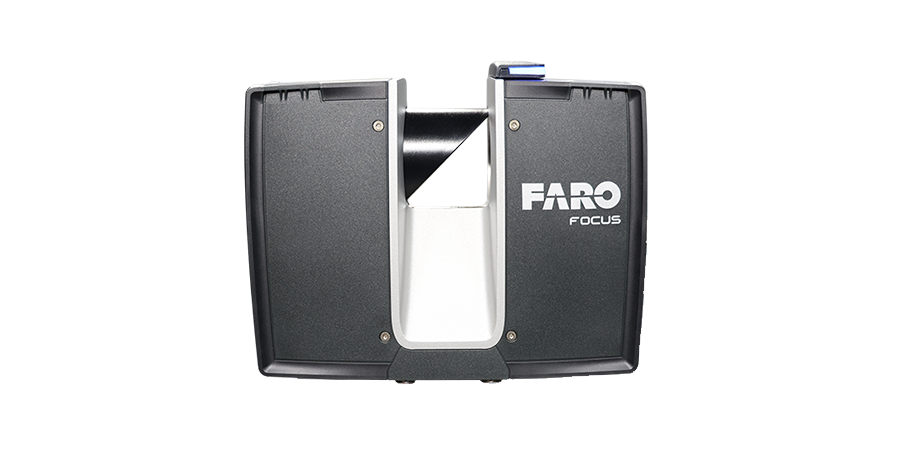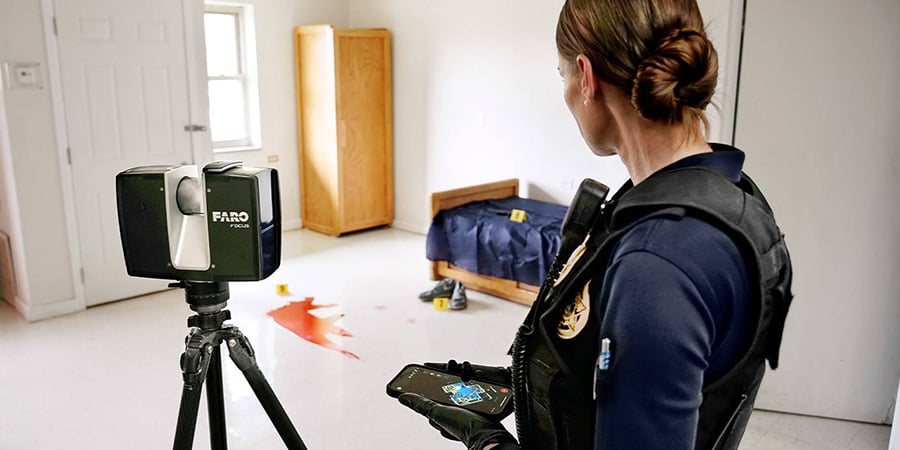When complex or large environments need to be documented, Laser Scanners provide a practical and economical solution.
Original Source - FARO Technologies
Traditionally, capturing large environments relied on tools that produced single-point measurements, such as tape measures, piano wire, plumb bobs, laser range finders and total stations. While they are familiar tools, they are often time-consuming, often taking days, weeks or months depending on the space. Additionally, traditional tools often produce inconsistencies in measurements from user to user and ultimately data often get missed, leading to potentially cascading inaccuracies.
In contrast, Laser Scanners are non-contact devices that capture millions of discrete data points to measure an object or space using laser infrared technology that produces detailed 3D images in minutes. The images comprise millions of 3D data points, known as a point cloud.
So, how do they accomplish all of that so quickly? The Laser Scanner emits a beam of infrared laser light onto a rotating mirror that effectively paints the surrounding environment with light. The scanner head rotates, sweeping the laser across the object or area. Objects in the path of the laser reflect the beam back to the scanner, providing the geometry that is interpreted into 3D data. In addition to the distance measurement, Laser Scanners also capture measurements on the horizontal and vertical planes, providing a full scope of measurement data.

A Laser Scanner typically captures data through two kinds of systems:
Time-of-flight systems: Also known as a pulse measurement system, this works by emitting a single pulse of laser light and determining the distance to the endpoint by measuring the time it takes for the light to be reflected back to a sensor on the scanner.
Phase-shift systems: Similarly, this system also uses an emitted laser light, but in this system, the intensity of the light is modulated with specific waveforms. The reflection of the intensity patterns is displaced by the impact on the surface of the object. Measuring the displacement between the sent-out and the received laser signal provides a precise distance calculation. Generally, Laser Scanners that use phase-shift systems are accurate, fast and provide high-resolution data.

Applications and Industries:
Laser Scanners are versatile, easy to use and move, and accurate, making them an ideal tool for many applications and industries:
Law enforcement & fire safety:
Laser Scanners are effective tools for crime scene documentation, crash and accident scene reconstruction, fire scene analysis, forensic investigations and more. Laser scanning saves hours of documentation time and preserves a digital replica of scenes that may be environmentally vulnerable.
Safety & security:
Laser Scanners capture highly detailed, valuable data used by security personnel to save lives when responding to potential threats.
Insurance:
Laser Scanners are used to document the actual state of a piece of property at a point in time, helpful for setting a baseline for value and obligation, as well as documenting losses with vehicles, damaged properties or products.

Oil & gas:
Laser scanning is well-equipped to assist in engineering, maintenance and planning on oil platforms and in refineries. They are also highly useful in documenting complex piping structures to avoid installation issues or errors.
Heritage & historical preservation:
Laser scanning can document the complex geometries of existing buildings in order to study, preserve or restore them.
Site surveying:
Laser Scanners can be used to make volume calculations as well as topographic and as-built surveys.
Construction:
Laser scanning can provide continuous in-field verification at every stage of a construction project lifecycle, helping predict and prevent errors and enabling significant cost, scrap and time savings.
Architectural & civil engineering:
Laser Scanners are useful for capturing as-built documentation of existing buildings and in developing 3D models as part of project planning.
Facilities management & asset documentation:
Laser scanning offers precise data of complex factory and plant installations, useful in maintaining and documenting assets and facilities.
In each application scenario, a Laser Scanner produces accurate results in less time and with fewer errors than other, more traditional methods. In some cases, such as documenting crime and crash scenes, the time saved offers downstream benefits such as being able to open roadways to the public earlier. In applications that require outdoor work, Laser Scanners can document complex areas where inclement weather is a concern.



